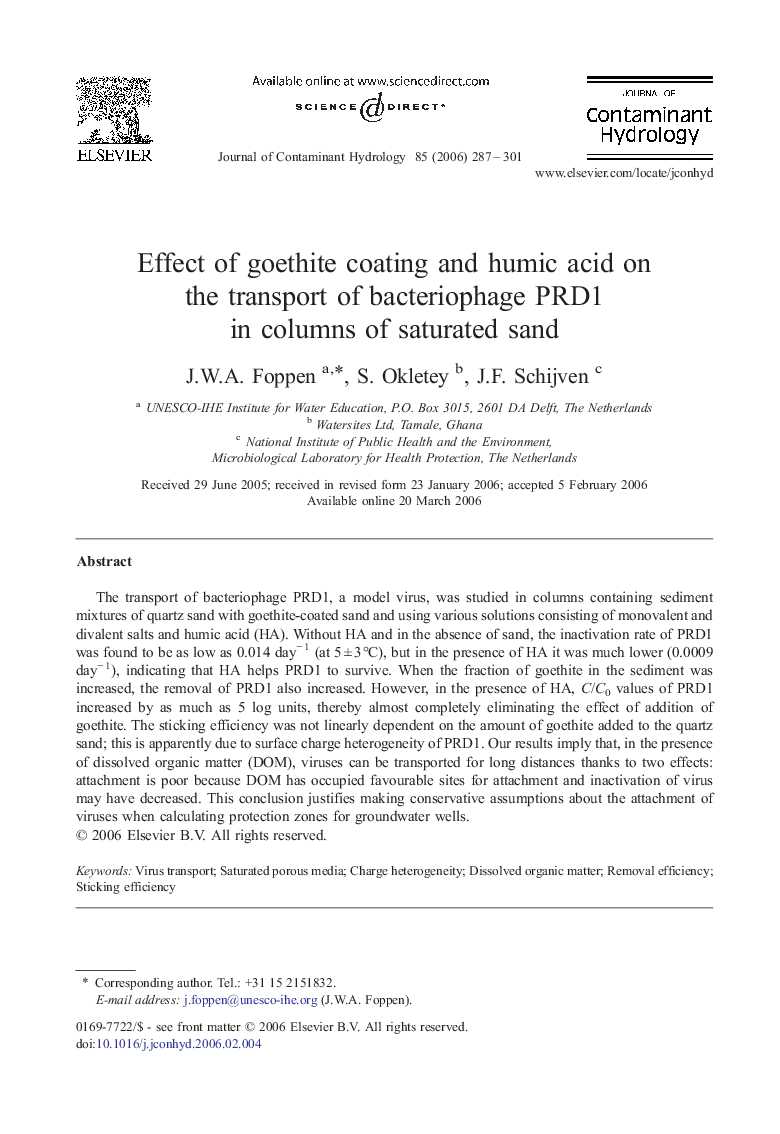| Article ID | Journal | Published Year | Pages | File Type |
|---|---|---|---|---|
| 4547640 | Journal of Contaminant Hydrology | 2006 | 15 Pages |
The transport of bacteriophage PRD1, a model virus, was studied in columns containing sediment mixtures of quartz sand with goethite-coated sand and using various solutions consisting of monovalent and divalent salts and humic acid (HA). Without HA and in the absence of sand, the inactivation rate of PRD1 was found to be as low as 0.014 day− 1 (at 5 ± 3 °C), but in the presence of HA it was much lower (0.0009 day− 1), indicating that HA helps PRD1 to survive. When the fraction of goethite in the sediment was increased, the removal of PRD1 also increased. However, in the presence of HA, C/C0 values of PRD1 increased by as much as 5 log units, thereby almost completely eliminating the effect of addition of goethite. The sticking efficiency was not linearly dependent on the amount of goethite added to the quartz sand; this is apparently due to surface charge heterogeneity of PRD1. Our results imply that, in the presence of dissolved organic matter (DOM), viruses can be transported for long distances thanks to two effects: attachment is poor because DOM has occupied favourable sites for attachment and inactivation of virus may have decreased. This conclusion justifies making conservative assumptions about the attachment of viruses when calculating protection zones for groundwater wells.
